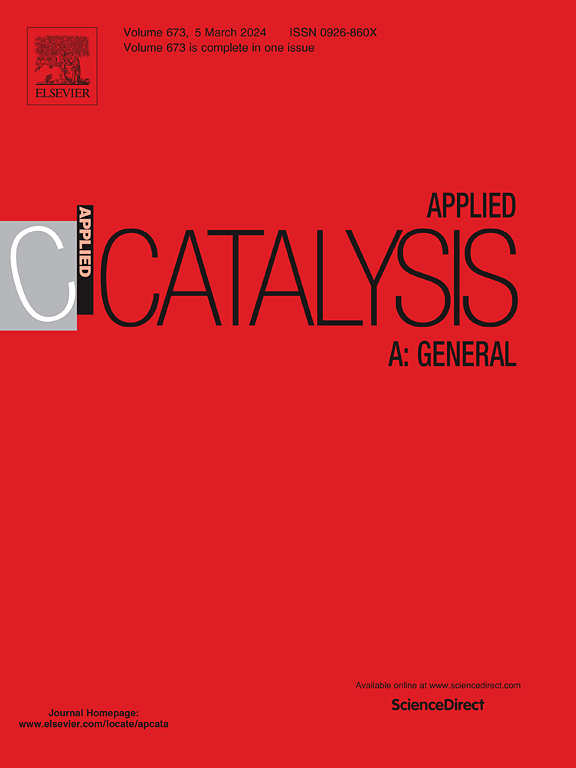Enhanced electrooxidation of furfural to 2-furoic acid over NiCo2O4/NF: Optimization, in-situ monitoring and continuous AEM cell evaluation
IF 4.7
2区 化学
Q2 CHEMISTRY, PHYSICAL
引用次数: 0
Abstract
The electrooxidation of furfural (FF) to 2-furoic acid (FA) offers a promising route to produce fine chemicals from renewable biomass. Currently, readily prepared nanosheet catalysts NiCo2O4/NF were developed for the electrooxidation of FF to FA. The catalysts were characterized via SEM, XRD, and XPS, revealing a Co3+ active site and a spinel structure that facilitated efficient electron transfer. An optimum FA yield of 80.44 % and an FF conversion of 83.12 % were obtained at 1.0 M KOH, 1.45 V vs. RHE and 40 °C, with a Faraday efficiency of 86.95 %. A continuous flow anion exchange membrane electrolysis cell was further designed to demonstrate the scalability of the process, achieving an FA selectivity of 93.37 %. Moreover, in-situ electrochemical FTIR accomplished real-time dynamic monitoring of the conversion of FF to FA, highlighting the potential of nickel![]() cobalt transition metal oxides in the sustainable upgrading of biomass-derived chemicals.
cobalt transition metal oxides in the sustainable upgrading of biomass-derived chemicals.
NiCo2O4/NF强化糠醛电氧化制2-糠酸:优化、原位监测和连续AEM电池评价
糠醛(FF)电氧化制2-呋喃酸(FA)为可再生生物质生产精细化学品提供了一条有前景的途径。目前,制备简便的NiCo2O4/NF纳米片催化剂用于FF电氧化制FA。通过SEM、XRD和XPS对催化剂进行了表征,发现催化剂具有Co3+活性位点和有利于电子高效转移的尖晶石结构。在1.0 M KOH, 1.45 V vs. RHE, 40°C条件下,FA产率为80.44 %,FF转化率为83.12 %,法拉第效率为86.95 %。进一步设计了连续流动阴离子交换膜电解槽,验证了该工艺的可扩展性,FA选择性为93.37 %。此外,原位电化学FTIR完成了FF向FA转化的实时动态监测,突出了镍钴过渡金属氧化物在生物质衍生化学品可持续升级中的潜力。
本文章由计算机程序翻译,如有差异,请以英文原文为准。
求助全文
约1分钟内获得全文
求助全文
来源期刊

Applied Catalysis A: General
化学-环境科学
CiteScore
9.00
自引率
5.50%
发文量
415
审稿时长
24 days
期刊介绍:
Applied Catalysis A: General publishes original papers on all aspects of catalysis of basic and practical interest to chemical scientists in both industrial and academic fields, with an emphasis onnew understanding of catalysts and catalytic reactions, new catalytic materials, new techniques, and new processes, especially those that have potential practical implications.
Papers that report results of a thorough study or optimization of systems or processes that are well understood, widely studied, or minor variations of known ones are discouraged. Authors should include statements in a separate section "Justification for Publication" of how the manuscript fits the scope of the journal in the cover letter to the editors. Submissions without such justification will be rejected without review.
 求助内容:
求助内容: 应助结果提醒方式:
应助结果提醒方式:


